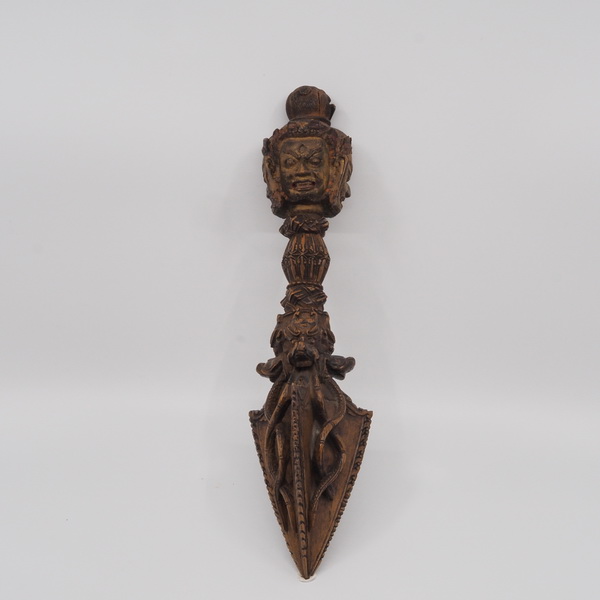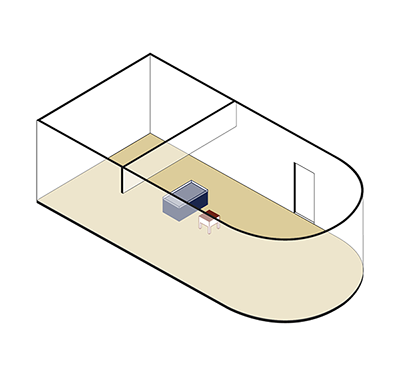ABR 008
Code: ABR 008
Country: Tibet
Style:
Date: 1550 - 1650
Dimensions in cm WxHxD: 7 x 30.5 x 7
Materials: Sandalwood
Vajarakila Phurba
Vajrakila - a ritual dagger known in Tibetan as dorje phurba.
Sandalwood with remains of painted decoration.
Vajrakila is the name of a particular ancient ritual dagger of Indian or perhaps Mesopotamian origin, employed by all Tibetan Buddhist schools.
The Phurba is a three-sided peg, stake or nail. The blade is usually composed of three triangular facets, meeting at the tip. These represent the blade's power to transform negative energies known as the "three poisons": attachment/craving/desire; delusion/ignorance/misconception; and aversion/fear/hate. The tantric use of the Phurba encompasses the curing of disease, exorcism, transformation of demons, meditation, consecrations, and weather-making. The blade is used for the destruction of demonic powers, while the top end is used for blessings. The phurba often bears the epithet "Diamantine Dagger of Emptiness". The phurbais therefore not an actual weapon, but a spiritual implement.
The phurba as a ritual object is also directly related to Dorje Phurba or Vajrakilaya, a wrathful deity of Tibetan Buddhism. According to Tibetan tradition the cult and practice of wrathful deity Vajrakila was introduced from India to Tibet during the 8th century by Padmasambhava. Müller-Ebelling et. al. (2002) affirm furthermore that the phurba is cognate with lingam, the generative instrument of Shiva that is metonymic of the primordial energy of the Universe. The phurba as lingam actualizes the yoni essence-quality of whatever it penetrates.
Vajrakila - a ritual dagger known in Tibetan as dorje phurba.
Sandalwood with remains of painted decoration.
Vajrakila is the name of a particular ancient ritual dagger of Indian or perhaps Mesopotamian origin, employed by all Tibetan Buddhist schools.
The Phurba is a three-sided peg, stake or nail. The blade is usually composed of three triangular facets, meeting at the tip. These represent the blade's power to transform negative energies known as the "three poisons": attachment/craving/desire; delusion/ignorance/misconception; and aversion/fear/hate. The tantric use of the Phurba encompasses the curing of disease, exorcism, transformation of demons, meditation, consecrations, and weather-making. The blade is used for the destruction of demonic powers, while the top end is used for blessings. The phurba often bears the epithet "Diamantine Dagger of Emptiness". The phurbais therefore not an actual weapon, but a spiritual implement.
The phurba as a ritual object is also directly related to Dorje Phurba or Vajrakilaya, a wrathful deity of Tibetan Buddhism. According to Tibetan tradition the cult and practice of wrathful deity Vajrakila was introduced from India to Tibet during the 8th century by Padmasambhava. Müller-Ebelling et. al. (2002) affirm furthermore that the phurba is cognate with lingam, the generative instrument of Shiva that is metonymic of the primordial energy of the Universe. The phurba as lingam actualizes the yoni essence-quality of whatever it penetrates.





